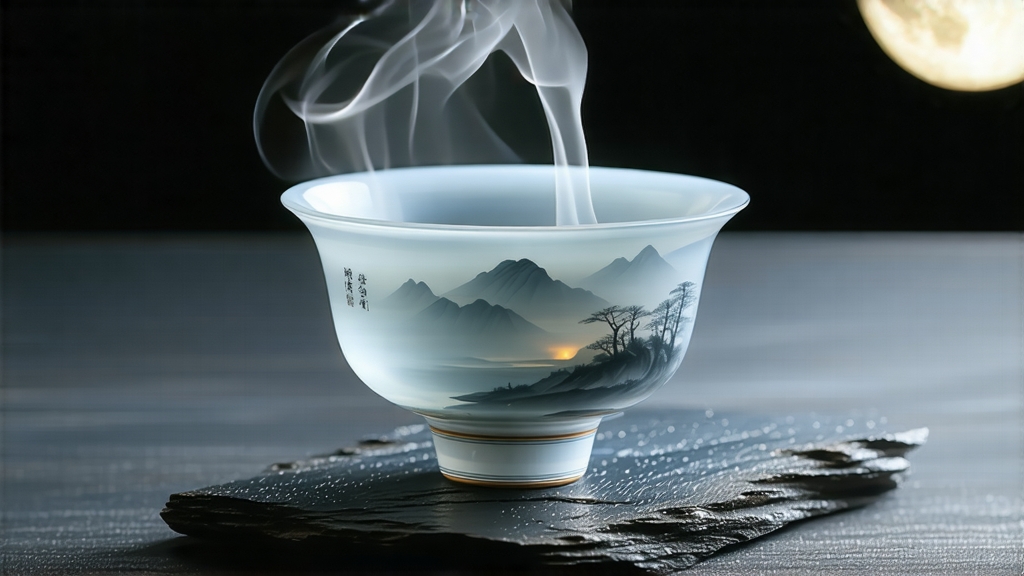
Tucked away in the subtropical highlands of southern Yunnan, where the Mekong bends like a loose silk ribbon and 2,000-year-old tea trees still lean over village paths, a quiet style of white tea has been catching the first and last light of every lunar cycle. International drinkers usually meet White Peony or Silver Needle first, yet the leaf that locals call Yue Guang Bai—“White Moonlight”—remains one of China’s best-kept secrets. Unlike its Fujian cousins, Yue Guang Bai is born under Yunnan’s intense ultraviolet sun, cooled by 1,800 m altitude, and finished by the chill of a waxing moon. The result is a tea that smells of night-blooming jasmine and mountain honey, tastes like apricot skin dipped in spring water, and finishes with the soft minerality that Chinese poets describe as “stone milk.” This article invites you to follow the leaf from forest to cup, tracing 800 years of oral history, contemporary craft, and the gentle alchemy that turns a single bud into liquid moonlight.
Historical whispers
White tea as a category was first catalogued in the Song Dynasty (960-1279), but Yunnan’s version never travelled far beyond the caravans that carried pu-erh to Tibet. Villagers in Jinggu, Lincang and Menghai insist that moonlight-withering began when a Ming-era caravan was forced to camp for three nights; the tea cool-fermented under moonlight and arrived in Lhasa fragrant rather than musty. Whether legend or marketing yarn, the practice of spreading fresh buds on bamboo screens from dusk to dawn survived, passed down by Dai and Bulang grandmothers who believed the moon “locked the soul of the leaf.” Only after 2003, when Yunnan’s specialty producers began entering white-tea competitions, did Yue Guang Bai acquire a formal name and reach export shelves.
Terroir and cultivar
Yue Guang Bai is not tied to one clone but to a picking standard: one unopened bud, occasionally a bud-and-immediate-leaf, harvested from Yunnan large-leaf tea trees (Camellia sinensis var. assamica). These trees develop thicker cell walls and higher polyphenol count than the small-leaf Fujian bushes, giving the tea its signature weighty texture. The best lots come from 1,600–2,000 m gardens where morning fog filters UV light, allowing slow amino-acid accumulation. Soils are lateritic, rich in iron and quartz; locals claim the quartz reflects moonlight, extending the withering phase even after sunset.
Plucking ritual
The harvest window is merciless: buds must be plucked between the Qingming and Grain Rain periods (early April) when they reach 2.5–3 cm but before the first scale unfurls. Experienced pickers pinch with the nail, never the fingertip, to avoid bruising and premature oxidation. A full kilogram of finished tea demands roughly 28,000 buds, all picked before 9 a.m. while dew still acts as a natural protective film.
Craft: the moonlight wither
Unlike Fujian white tea that relies on gentle sun-withering followed by indoor rest, Yue Guang Bai undergoes a 48- to 72-hour “dual wither.” Fresh baskets are first set under morning sun for 30–40 minutes, turning the leaf edge a faint celadon. Screens are then carried into open-walled lofts where mountain wind lowers moisture to 40%. The critical step happens at night: buds are spread one layer deep on mesh trays exposed to moonlight and starlight, temperature 12–18 °C, humidity 65–70%. Enzymatic oxidation proceeds so slowly that the bud remains biologically alive, converting catechins into floral lactones while retaining a high ratio of theanine. No machine heat is ever applied; the leaf enters a wood-fired low-temperature dryer (35–40 °C) only when internal moisture reaches 8–9%, locking in a downy silver appearance with contrasting black back—an optical trick that reminds farmers of lunar phases.
Grades and styles
Commercial grades hinge on bud percentage and moonlight duration.
- Supreme Moonlight: 100 % buds, 72 h wither, liquor the colour of light chardonnay.
- Classic Moonlight: 70 % buds,